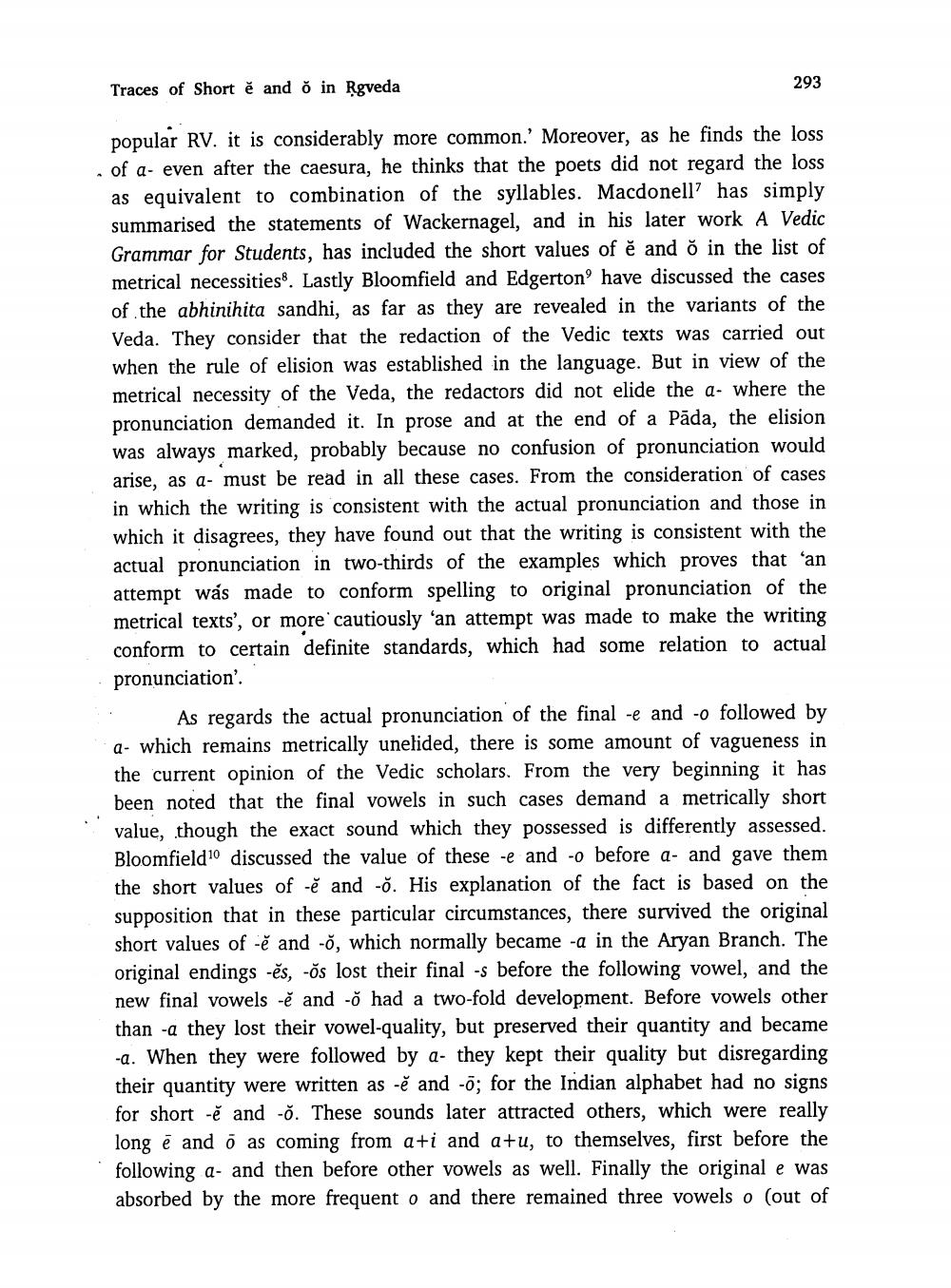________________
Traces of Short ě and o in Rgveda
293
popular RV. it is considerably more common. Moreover, as he finds the loss of a- even after the caesura, he thinks that the poets did not regard the loss as equivalent to combination of the syllables. Macdonell' has simply summarised the statements of Wackernagel, and in his later work A Vedic Grammar for Students, has included the short values of ě and o in the list of metrical necessities. Lastly Bloomfield and Edgerton' have discussed the cases of the abhinihita sandhi, as far as they are revealed in the variants of the Veda. They consider that the redaction of the Vedic texts was carried out when the rule of elision was established in the language. But in view of the metrical necessity of the Veda, the redactors did not elide the a- where the pronunciation demanded it. In prose and at the end of a Pāda, the elision was always marked, probably because no confusion of pronunciation would arise, as a- must be read in all these cases. From the consideration of cases in which the writing is consistent with the actual pronunciation and those in which it disagrees, they have found out that the writing is consistent with the actual pronunciation in two-thirds of the examples which proves that 'an attempt was made to conform spelling to original pronunciation of the metrical texts', or more cautiously ‘an attempt was made to make the writing conform to certain definite standards, which had some relation to actual pronunciation.
As regards the actual pronunciation of the final -e and -o followed by Q- which remains metrically unelided, there is some amount of vagueness in the current opinion of the Vedic scholars. From the very beginning it has been noted that the final vowels in such cases demand a metrically short value, though the exact sound which they possessed is differently assessed. Bloomfieldo discussed the value of these -e and -o before a- and gave them the short values of ě and ->. His explanation of the fact is based on the supposition that in these particular circumstances, there survived the original short values of -ě and ->, which normally became -a in the Aryan Branch. The original endings -ěs, -os lost their final -s before the following vowel, and the new final vowels -ě and -> had a two-fold development. Before vowels other than -a they lost their vowel-quality, but preserved their quantity and became -Q. When they were followed by a- they kept their quality but disregarding their quantity were written as -ě and -7; for the Indian alphabet had no signs for short -ě and -ě. These sounds later attracted others, which were really long 7 and 7 as coming from a+i and a+u, to themselves, first before the following a- and then before other vowels as well. Finally the original e was absorbed by the more frequent o and there remained three vowelso (out of




